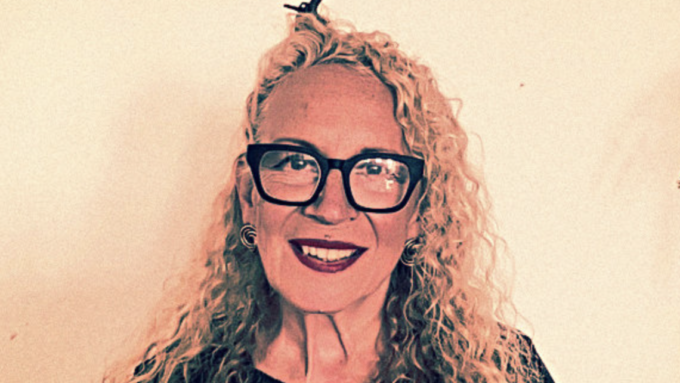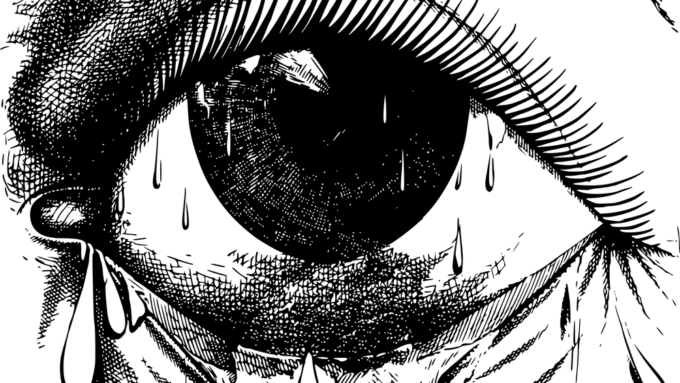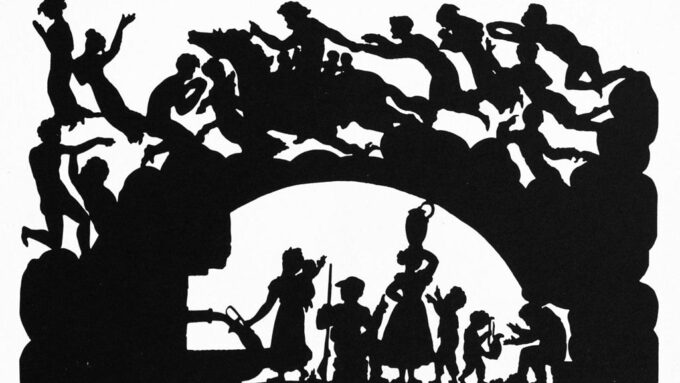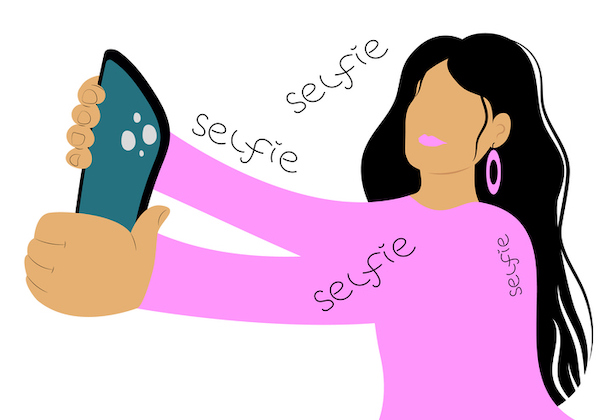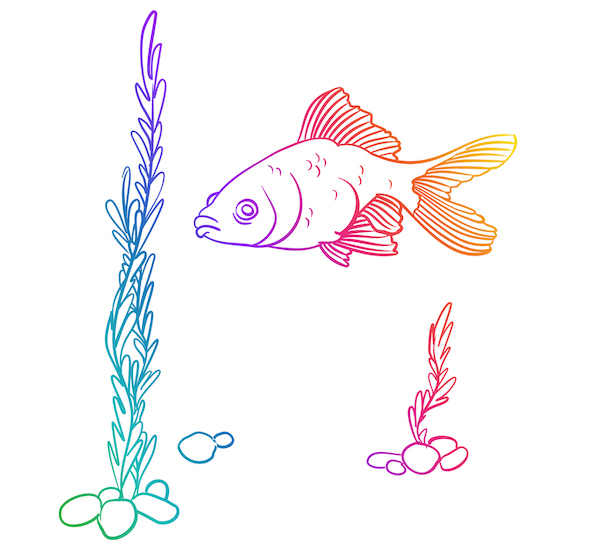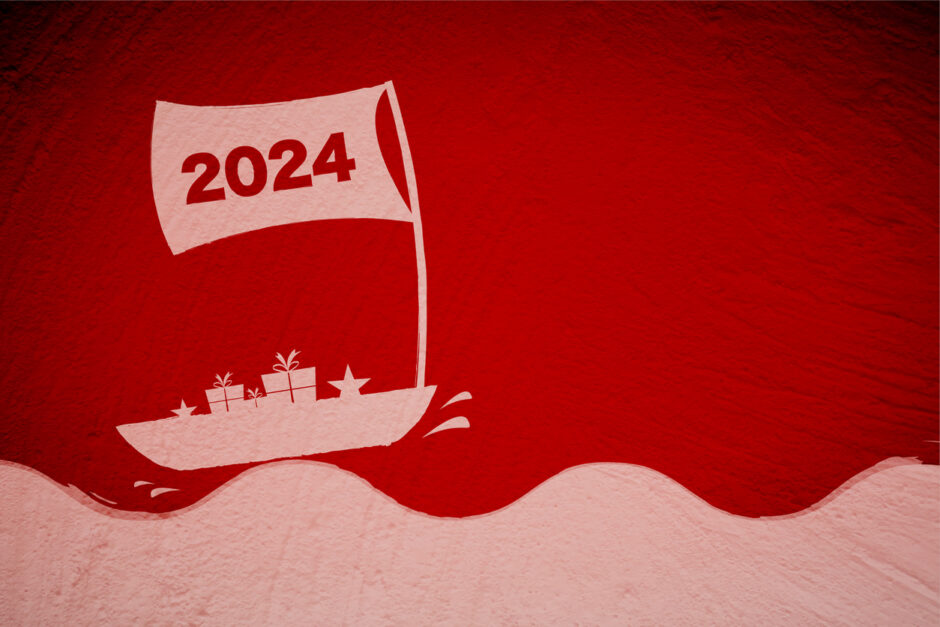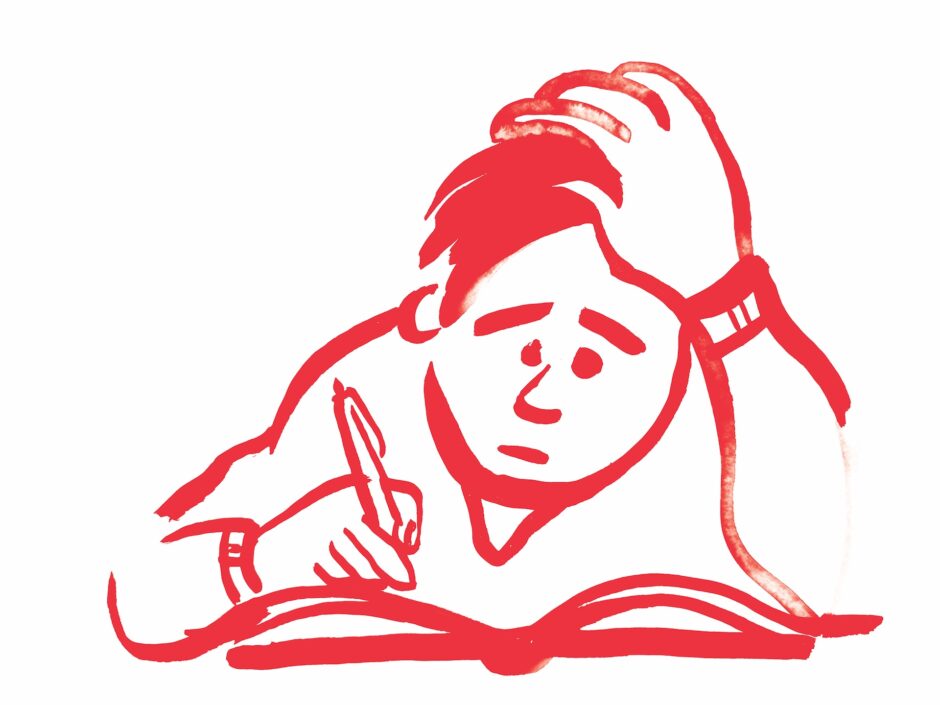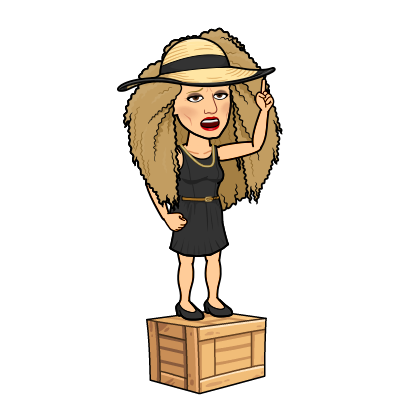If you came into the world sporting insanely curly hair like me, you’ve probably had a love/hate relationship with it throughout your life. It’s estimated that about 60% of us have curly hair. That’s a… More
Blog
Are you doing it this winter?
Are you taking the plunge this winter? Readying yourself to tap into a euphoric eruption of endorphins? Already wondering what I’m on about. I’m talking about cold-water swimming, of course. What? Did you think this might be a spicy little post about something else? Bad luck: you need to go elsewhere for your X-rated intake.
We’re heading into winter in the Southern Hemisphere, so it’s time to consider the exercise regime of choice over the cold months. In the Northern Hemisphere, people are throwing in their cold-water towels and planning beach breaks and warm stuff. I just read a review of her second year at it by Caitlin Moran. She seems to like this what? Hobby … sport … therapy … self-inflicted act of sadomasochism? “Who needs drugs when I can get off my face cold water swimming?” Whatever you choose to call it, cold water swimming is riding a wave, as it were—I know at least two people in NZ who swear by it. Maybe in NZ, it’s worth a go. Where I live, we rarely even get frost, so it could add a bit of frisson to one’s day as winter sinks its fangs into the underbelly of autumn. But in colder climates like the UK, when you likely have to get a coast guard to chainsaw a swimming hole for you through the ice, it has to be nuts, right?
But growing it is, and growing both in popularity and controversy. It seems to have triggered some resentments which have bubbled to the surface in its seasonal wake.
Cold-water swimming seems like a relatively new thing. It’s not. It’s been a thing in many northern countries since … forever. In Russia, pre-Christians frolicked in ice water, and it became part of court protocol and was a custom among the ‘plebs’ throughout the Moscovian era from the late Middle Ages. Muscovy was a Grand Duchy or Principality founded in 1283, which morphed into the Russian Empire in the early eighteenth century under the first tsar.
What’s changed is that ice-swimming competitions have sprung up like icicles after a deep chill. The establishment of the International Ice Swimming Association in 2009 formalised ice swimming as a ‘sport’. Swimmers compete in the Ice Mile (1608 metres). The water must be colder than 5 degrees Celsius, and competitors are only allowed the basics of swimming goggles, caps, and togs. There’s now also a metric 1500m version. Are they mad? To borrow from Gordon Ramsey, “Expletive me!”
So why do people take the plunge? Caitlin says it involves “ten minutes of gasping, often agonised breaststroke through frost, sleet, hail and snow, but the endorphins make it all worthwhile”. Put like that, does it sound like something everyone should try at least once? Adherents say benefits positively affect the cardiovascular, endocrine, and immune systems. There’s also the psychological and metabolical lift (remember all those endorphins).
However, I would never inadvertently put my readers at risk by encouraging something that could negatively affect your health and well-being. For all the apparent benefits, detractors claim it’s pretty risky, particularly for inexperienced and untrained swimmers. So, if you’re considering it as your next wellness springboard, it’s recommended to go for a gradual acclimatisation. Dip your toe in the water, so to speak. Break yourself in one shivering inch at a time over time rather than jumping in at the deep end. While cold water swimming might be verging on a religious rite to some, this extreme version of total immersion can kill you. Heart failure brought on by extreme cold is one of the risks, as is the only slightly lesser possibility of hypothermia.
I have tried it, though, so never let it be said that my opinions are based on prejudice and hearsay alone. One night, many (many) years ago, as an undergraduate at Saint Andrews, a few of us were having dinner at a friend’s house. Said house was a stone’s throw from the town’s celebrated outdoor swimming pool, located on a wind-blasted shore and filled by the incoming tide. Such pools used to be common in coastal resorts, but they’ve fallen out of favour. From the late sixties, we Brits deserted the bracing outdoor experience, lured by the advent of the cheap ‘bucket shop’ holiday. Cheap all-in packages allowed us to escape our dismal summer and flock in droves to Mediterranean nirvana, where we pursued the honourable pastime of frying ourselves to a crisp on a beach, falling into the bath-warm sea to break the monotony of hours prone on a sun lounger mitigated by copious quantities of lager and cocktails.
Back in historic St. Andrews, imagine the scene, if you will. About six of us are in the post-dinner alcohol-infused bravado stage that tends to herald trouble when you’re a student. At some point, someone (history doesn’t relate who) said, “Let’s go for a swim”. It’s February, in the middle of the Scottish winter, but we’re pretty drunk, and it seems like a great wheeze. Our host somehow rustles up towels for everyone. We lurch over to the pool, which is as wind-swept as ever, black as Hades, and we could just make out the white tops on the not-inconsiderable waves. Some brave soul sheds most of their clothes and jumps in, provoking the rest of us to follow quickly—no one wants to appear a wimp.

Gordon Ramsay’s ripe vocabulary applies here, too. It was beyond cold. Eskimo Pie cold. The sort of cold that makes your lungs want to collapse to avoid it. I doubt we stayed in for more than a nano-second as the freeze factor sobered us up, and we grasped how insane it was. I don’t imagine the current practitioners get in a wild sea pool at 2am at least five sheets to the wind. You’d have to hope not. How we survived without succumbing to hypothermia, I’ll never know. They’re right about one thing, though. The endorphins are incredible – once you’ve convinced your lungs to start functioning again and the blood starts flowing back to those important muscles, like your brain. As the chill receded along with the blue flesh and chattering teeth, the big-noting began, and a saga was born.
A very long-winded way of saying that cold-water swimming isn’t new. But it’s spawned a new, highly divisive fashion accessory—the dryrobe. Ever ready to get on a new bandwagon, the fashion industry has seen this predominantly middle-class pursuit as a potential gold mine. Ergo, we now have the dryrobe as the accessory of choice for the dedicated cold-water swimmer. In case, like me, you’d missed the arrival of this seminal new garment, they’re huge coats with towelling lining. They break all the prevailing fashion rules, which require a garment to render the wearer less, rather than more, bulky. Dryrobes also apparently achieve the sleight of drape that makes wearers look triangular.
Nonetheless, swimmers love them so much that they’ve started popping up in the most improbable places— supermarkets, football stadiums, and even workplaces. It won’t be long before someone decides to discard their ball dress for one. Their popularity now goes way beyond the original purpose of post-dip warmth and modesty.
But in parallel, dryrobes have become a weapon in the class wars. Google and ye shall find headlines like Too Cool for the Pool: How the Dryrobe Became the Most Divisive Thing You Can Wear. (The Guardian) and Don’t Humiliate Anyone You Spot in a Dryrobe, Especially When It’s Me. (The Times). There even is (or was) a Facebook Page, The Dryrobe Wankers, with more than 80,000 followers. Let the games begin!
I live a hop, skip and a jump (or a slide, skate or slush trudge in winter parlance) to a waterfront. Once I’ve saved enough money for the eye-wateringly expensive, must-have dryrobe accessory, perhaps I’ll give it a go. Perhaps. If the tides are right. If there’s a full moon and I can see hair growing on the palms of my hands. If Hell starts freezing over. Wait, it seems to me that cold water swimming actually is Hell on Earth, so why opt to get there early, even equipped with a dryrobe? I like my swimming holes to be like the velvet warmth of the Mediterranean mid-summer or the waters inside the reefs in the Fijian Islands, where you can bask like a lurking shark for hours on end without getting cold. Without the sharks. Or the rip currents. Or even any waves when I think about it. I’m sorry, Caitlin, but you can keep the big chill, endorphins notwithstanding. I’ll take a long soak in a hot bath every winter.
Do the (Side) Hustle
Remember the 1975 disco hit The Hustle by Van McCoy and the Soul Symphony? The ‘song’ made No. 1 on the U.S. Billboard Hot 100 and Hot Soul Singles charts during the summer of 1975 and on the Canadian RPM charts. It peaked at No. 3 in the U.K., No. 5 in New Zealand, and No. 9 in Australia. It only made 38 on the French Singles Chart, confirming (in case it needed to be) that the French are different. The Hustle won a Grammy for Best Pop Instrumental Performance early in 1976 and sold over a million copies.
But wait, there’s more. This catchy but annoying ‘song’ has been featured in films including Stuck on You, Vampires Suck and The Lorax, T.V. programmes— Shark Tales, That ‘70s Show, American Dad! and Futurama, amongst others. You’d have to say it was a whopping success despite only having three words—Do the Hustle!
According to wikiHow, The Hustle is a “fast-paced partner dance, related to swing, and commonly danced to disco and modern pop. The dance involves four basic moves: stepping, twirling, chicken dancing, a move called ‘The Travolta’, and turning.” Then it was rinse and repeat until you drop.
If you want a walk down memory lane and the chance to brush up on your hustle moves or try them out for the first time, you’ll find instructions in this incredibly cheesy short video. You’ll love it … honestly. Despite my cynicism, listening to it brought a fun flashback to my mid-seventies teenage disco queen.
Anyway, despite a cursory search into the background of the dance, I couldn’t find anything specific. Presumably, it was a nod to the need to hustle to succeed or survive in the hustle and bustle of the seventies. It’s become much more sophisticated these days—it seems everyone has a side hustle—as a cheeky ‘must have’ accessory to one’s working life. Side hustles are flexible work that you do over and above your primary job to bring extra cash, get your creativity flowing or add purpose to your life. It could be taking up a new hobby, learning a new skill or using an existing one you want to ‘monetise’ at some point. Could even be volunteering for a non-profit you rate.
As professional speaker and coach Alissa Carpenter says, “We all know Millennials love a good side hustle—to fuel their passions and wallets”. But it’s not just Millennials. It seems we’re all at it, including me; you’re no one if you don’t have a side hustle. It’s the ultimate put-down of our contemporary world: “What, no side hustle!”. I exaggerate, but the concept of the side hustle is endemic.
I feel we need an updated version of The Hustle—Do The Side Hustle. What a pity Van McCoy died in 1979, shortly after the hit’s success, so he can’t do a side hustle of his own by remastering the original and raking it in. Clearly, it’s a great opportunity for some keen hustler.
Of course, it isn’t new. People have been forced or opted to take up additional burdens to make ends meet since Adam and Eve were ejected from Eden without notice. I’m sure they hadn’t had time to build up a rainy-day nest egg. People bandy the words around like membership of an exclusive club, but for people living on the margins, it’s always been an unwelcome part of their reality—the only way they can feed their families and survive. There’s also always been the darker side. I’m thinking black marketeers during war and rationing when fortunes are made by offering consumer goods that couldn’t be bought in conventional shops at exorbitant prices. The side hustle all too often comes wrapped in the trappings of despair, manipulation or holding people to ransom.
While this type of side hustle is still shamingly very much part of the human condition, the trendy contemporary version seems pretty harmless. Side hustles, after all, make us better, more rounded, more connected, or simply wealthier people. Where’s the harm? Who suffers if you decide to set up an Etsy Shop as an outlet for your creativity? Or if I use all my waking hours outside work trying to become a best-selling author? Surely, it’s good to pursue the paths that make our hearts sing beyond the 9 to 5 grind. Why not use our ingenuity to make money on the hoof?
I’m a side hustler with the best of them, but there are issues. I’m about to publish a new book, and I’m running on fumes, trying to keep all the plates spinning. Side hustles can be hungry beasts sucking up all your best energy. In my day job, I run a design studio, which I own. As my book launch date looms, I’m not entirely clear which is the side course, and which is the main one as I scramble to keep all the plates spinning and keep my business dynamic whilst doing everything it takes to give my book its best shot. I’m blessed with high energy levels, but they’re not infinite, and I’m conscious of the risk of burnout if I keep the candle lit at both ends. I live alone, so it’s my call how I use my out-of-office time, but side hustles can short-change friends and family, stealing time that should be theirs.
I’m all for putting time into hobbies and gaining new skills. You meet new people, expand your horizons, and potentially earn a bit of welcome extra dosh. I’ve met a wide range of like-minded people through mine, something I didn’t even consider when I started my indie publishing business with my sister. However, the statistics show that side hustles as a necessity are on the rise. According to CNBC’s Gilli Molinsky, “44% of people with a side hustle think they’ll always need it—and more are picking one up”. According to an April 2023 Bankrate survey of 2,505 U.S. adults, more than 39% have a side hustle to help cover living expenses rather than for discretionary spending. Half of the Millennials surveyed and over fifty per cent of the Gen Xers have one.
The tragedy behind these stats is that too many people are going backwards financially, often underpaid, and coping with eye-watering costs of living hikes. Inflation at least seems to be under control (for now), but that only means commodities stay at the same high rates; they don’t revert to their more affordable pre-inflationary levels, so the cost-of-living hike is hard-wired in even though the curve has flattened (again, for now).
Anyway, I’m sure you get my point. Side hustles can be fun and richly rewarding on many counts for those of us lucky enough to follow our dreams because we can. They shouldn’t be a survival mechanism for people who have no choice.
P.S. Sorry if I’ve given you an earworm. If it’s any consolation, I can’t get the pesky Hustle thing out of my head either.
You have the attention span of a goldfish!
Devastating insult or statement of fact? According to “the science”, having the attention span of a goldfish would, until recently, have meant you could only manage to focus on something for around eight seconds. That much? is my first thought. My second is, how on earth can they tell with goldfish?
It’s easy with humans. After all, you kind of get the idea—there’s nothing like the affirming glow of watching someone’s eyes glaze over as they zone out listening to your latest rant. You don’t have to be the empath of the century to discern that you’ve lost them. Even if they’re polite and conditioned to look mildly interested, the twitching mouse hand or the occasional furtive but longing glance at their mobile or the look over your shoulder to find someone more interesting speaks volumes.
But fish? Unless I’m missing something, their eyes are perpetually glassy and lacking focus. Maybe some earth-shattering metaphysical thinking is going on as they swim, seemingly purposelessly, from one side of their bowls to another. Perhaps we judge harshly, and they’re living the fish dream. Enjoying the little joy things like that witty sunken treasure chest or shipwreck you thoughtfully placed to enrich their existence. Maybe they, like humans, aspire to smell the roses and rise above the limitations of the daily grind. For goldfish, rather than roses, think the aesthetic and olfactory glory of a bunch of weird sounding aquatic plants—Moneywort, Hornwort, Rotala Rotundifolia, Pygmy Chain Sword, Hygrophilia Polysparma and Cryptocorne Wendttii are among the most popular. They seem more like ingredients the witches in Macbeth might have been familiar with than joy bringing plants. Each to their own.
In any case, according to Forbes Magazine, in 2015, the internet was awash with shock and horror about claims that the attention span of the average human had plummeted to eight seconds–about the same as that of a goldfish—and that it was getting shorter There were even suggestions that big sporting events be condensed to accommodate this downward dog of a trend. “Well, bugger me sideways!” scandalised people everywhere exclaimed (when shock saw off good taste and horror provoked strong reactions). “That’s appalling! How have we sunk so low? Can’t we rewind to the Halcyon Days of pre everything smart and get back to being smart ourselves?”
More recently, this supposition has been pretty roundly debunked. It turns out that we both—humans and goldfish—can do better than the eight-second average that only a few years ago shocked and horrified so many. Phew. That’s all right then. Let’s face it: eight seconds is mind-bogglingly unimpressive. Eight seconds pass faster than you can spell Mississippi. (Remember how we were taught to time stuff absent as kids by saying one Mississippi, two Mississippi, three Mississippi, four, five, etc, ad infinitum to count time for stuff like games and races where timing mattered and we didn’t have mobile phones with inbuilt timers).
But just because we can do something doesn’t mean we will. Even thoug we are able to focus on one topic beyond eight seconds doesn’t always mean we will. Off-hand, I can think of several examples where my attention span slumps to significantly less than eight seconds. I generally give up well before the eight-second mark when searching streaming services for something new to watch, and pick up my Kindle instead. There’s just so much choice. I want to watch stuff as a leisure activity, not something that feels like so much more work. As you will have read in my previous blog, assembling flat pack furniture is another example where I need the dogged determination of a terrier after a rat that’s gone to ground to push beyond any seconds of focus.
All joking apart, I have the 2015 understanding of a goldfish’s attention span when it comes to stuff I don’t care about and an infinite capacity to focus on the stuff I do. Whatever the extended span of a goldfish is now said to be, it’s not like they use it to read books or put together flat-packed furniture! There’s no one-size-fits-all on attention spans, and stupid scientific research trying to average it out is … er … stupid … in my humble opinion. But it does seem as if attention spans have shortened and continue to shrink.
I can cut people slack and believe we pay attention when we want or need to. Perhaps that’s generous, and I should be more worried about the overall plummet in our device-induced vacuousness. But my worry is declining attention seems to walk hand-in-hand with the infinitely scarier knowledge that in places like the UK, as many as 50% of the population don’t read books. That’s don’t, not necessarily, can’t. FIFTY PER CENT!!!! Most people can read. Reading is still taught at schools. They just choose not to.
I read this in the Times Newspaper this week and nearly wrote an email to the editor expressing my shock and horror until I realised that would make me one of those grumpy older people always harping on about an infinitely better state back in the day. But I can muster pretty impressive howls of outrage at the loss to humanity when people consign the greatest thinkers of the past to the too-hard basket because they no longer have the inclination or stamina to cope with anything more than a meme, lurid headline or the latest TikTok sensation. Oops, straying into the grumpy olds again.
In our defense, lack of attention is not entirely our choice. We have a conscious aspect that supports focus and a subconscious one that keeps chucking other things on our periphery into the mix. We’re conditioned to scan for trouble so we can trigger the fight, flight reflexes that linger on from our more primal pasts. Now, it’s more like scanning the horizone for shiny new things to fixate over and take flight from the borning task at hand, but there is at least some justification for our fickleness of attention.
Achieving deep focus is a question of practice. It’s not something that just comes naturally to most of us. It’s a layered and nuanced skill built over time and effort, but we can’t be in that zone every minute of every day. There’s nothing wrong with bursts of limited attention. I went to my town’s annual fair yesterday and sifted around in a drift of people enjoying the day and relishing the enticing wafts of all sorts of yumminess from the food carts. I drifted and sifted without any particular focus, idly scanning the stalls for the shiny thing that would draw me in and get my attention. You can’t always give everything full focus—we need enjoyable and non-challenging downtime like that.
Coming back to the point, if goldfish have been proven to have attention spans longer than eight seconds, the old insult no longer holds true. We need something new and worse. What about substituting the humble gnat? Gnats have an attention span of zero—that’s nil, nada, zip, diddly squat—because gnats have no memory. Again, I wonder how on earth THEY know this, but THEY likely do, so I’ll take THEIR word for it. Whatever. Next time you’re tempted to accuse someone of having the attention span of a goldfish, think again. If you want a genuinely desiccating insult, it doesn’t get much better than comparing them to a gant. It’s a winner on two counts. Much worse than a goldfish and, unless you’re a serious gnatofile or gnatologist, they’re also ugly little suckers!
Fun with flatpack furniture
How hard can it be? Seriously. Putting together a bunch of pieces to make an item of furniture? Child’s play, you might think. I certainly did, as I pressed Buy on a stylish mini-drawer set from IKEA, which looked perfect for my new home office. I live in an apartment, so space is always a consideration, and this baby offered bountiful bang for my buck in its miniature Scandi magnificence.
Flatpacks, AKA knock-down furniture or ready-to-assemble furniture, are very popular. The concept is seductive—go to the online or physical store, buy the item, haul it home or get it delivered, and, after a bit of assembly time, voila, you have the perfect artefact for your home or garden or whatever. Right? Sort of.
But what a great wheeze flatpacks are…for their makers. Imagine the eureka moment when some eager beaver middle manager thought of an innovative way to make truckloads more money. Picture being a fly on the wall as said manager makes a presentation to their senior team, which might have gone something like this:
“I’ve been thinking outside the box to bring a major paradigm shift—or is it a pivot?— to the table here for your consideration. Thank you for the opportunity to run this game-changing idea up the flagpole. The central theme of the premise going forward is to let the customers assemble products themselves. Think what that will save us,” he/she/they enthuse as they rip through a PowerPoint full of quadrant graphs, up arrows next to dollar icons, etc.
“We get them excited about affordability, convenience and the whole DIY bandwagon that’s kicking off—they’ll love it and won’t notice we’re selling them a pup. Next steps? Whiteboard a go-to-market strategy, take a deep dive, unpack the possibilities, and shift the dial. I’ll reach out in a couple of weeks to touch base and see if it’s in your wheelhouse.”
In addition to being a walking cliché, our manager was clearly the identical twin of the towering genius who believed self-checkouts were a giant leap forward for civilisation.
But love them we did—flatpacks that is, not the suits responsible for them. IKEA, the spiritual home of the flatpack, was founded as a mail-order retailer in 1943 by Swedish entrepreneur Ingvar Kamprad. By the early 2000s, IDEA was the world’s largest furniture seller, with three hundred-plus stores and infinite online buying options.
Anyway, in the same way, time heals all wounds—or wounds all heels, if you prefer—it also cauterises past flatpack traumas. I’m not a flatpack virgin—I’ve given a few of them a go since the London IKEA opened to much excitement in 1987. It’s brutal—every time. But if you leave it long enough between purchases, the scars fade, and you forget how awful it was. Your inner recovery mechanisms dampen any trigger warnings, and before you can say, “Flatpacks suck”, you’re back in that magical thinking place where hope triumphs over experience. In my experience, hope has always been the loser.
Returning to last Friday. My new flatpack duly arrives at my business and, with it, my first challenge. It’s heavy. When I bought it, I thought it was made of lightweight wood or MDF or something. Oops. It’s metal. The box itself is pretty small, but I can barely lift it. How to get it to my car and home without breaking myself? My business partner gallantly lends me his fold-up trolley, and, home from work, I’m feeling optimistic and light-hearted as I start unpacking. Until I look at the instructions when buyer remorse kicks in big time. There are 20 different steps involved. Surely, that’s overkill for a box with six dinky drawers. Realising this might be more than a two-minute job, I put it off until Sunday as I have more fun things to do on Saturday.
The next day dawns bright and sunny, but I’m a bit groggy, having got home at 3am and woken up at my usual first sparrows ludicrously early timeslot. Despite the lack of sleep, I know it’s now or never—if I don’t tackle the beast immediately, it will stay in its box for all eternity. It’s summer and already about 30 degrees. By the time I’ve got to Step 12, I’m sweating like a dyslexic on a spelling bee as I realise I’ve made all six drawers with the runners on the inside. Unlike Intel, which is a good thing to find within your computer, for drawers, the big virtue is runners on the outside. OMG, kill me now. I unravel all six drawers, mashing my fingers with the out-of-control screwdriver and swearing like a trooper. You get the picture, I’m sure.
It took me three hours. THREE HOURS! The miserable hours. But I have to say, broken nails and bruised hands and all, I am very pleased with myself and my wee drawer set. Here are some handy tips to consider as your mouse hovers over the BUY button:
- Understanding flatpack instructions is a near impossibility. Sometimes, you have to discern a build path from screeds of written instructions, typically in a font size requiring more magnification than the Hubble Telescope achieves. The IKEA people had helpfully reduced the one in question to mostly large pictures. Despite this, at most stages, I was still none-the-wiser and resorted to trial and error…which rewarded me with …mostly error.
- Putting the wrong pieces together or the right pieces the wrong way around is a certainty, and hours disappear like clouds driven by a gale-force wind as you undo it all and start again.
- It’s easy to miss something in any given step. I’m unsure that the back of my drawer set is securely attached. But it’s the back, so who cares? Twenty-four hours later, it hasn’t fallen off. I’ll take the win.
- Think of a number, double it, then treble it, and you might end up with an approximation of the number of hours you need to allocate to this rewarding endeavour.
- If you are a quitter, don’t bother. You need a backbone of Titanium— wait, make that Tungsten—and the determination of a terrier up a drainpipe after a rat to put this sucker together.
- If you have high blood pressure or a heart condition, don’t bother.
- On no account, try it alone. Even if the other person is as bewildered by the entire thing as you are, you need—nay must have—moral support, or you’ll risk insanity.
- Flatpacks are a new level of pain, even if you’re a legend at DIY. I’ve done a fair amount of DIY in my time—hanging shelves, painting rooms, etc.—with reasonable results. Well, apart from that one time when I nearly electrocuted myself trying to wire up a small chandelier. Even this shocking experience had nothing on yesterday’s ordeal.
- If you thought you were a ‘potty mouth’ before you started, you’ll discover profanities you didn’t know you knew before you finish.
- The opportunity loss is immense—so many other things you could be doing instead of breaking your hands and mental equilibrium, grovelling about on the floor, perspiring and cursing the gods of convenience as your body curses your choice.
While researching for this post, I came across the previously unknown concept of flatpack assembly services. I felt immensely vindicated because if there are flatpack alchemists who can come to your rescue and transmute the base parts to furniture gold, that means flatpacks are impossible to put together—it’s not just me. How I wish I’d known. But OMG, the irony of paying someone to do what the manufacturers have offloaded—you pay less for the convenience of buying it in bits only to pay someone to put the bits together. Is the affordability thing, therefore, a delusion? Have we been suckered?
Unless you are a DIY Wizard or professional carpenter (why would you need a flatpack item in the first place), my best advice is to buy the made-up version, get help from someone who knows what they are doing or even bring in a paid professional, however much it hurts to do so. In my case, note to self: never buy another flatpack.
Serendipity rewards the prepared
When’s the last time you thought I just had one of the best days of my life? It’s easy when we look back to overload the scales with the things we’re not proud of or might do differently. Things that have caused us distress, harm or sorrow. Missed opportunities. Resolutions that didn’t make it to the end of January. The self-pitying seduction of the might-have-been is powerful.
Everyone around me was weary in the run-up to the holidays this year. Not unhappy, just a bit over it. By it, I mean 2023. There seemed to be a sort of collective consciousness willing the year away—a profound desire to close the door behind us on a confused, conflicted and curiously flat year and move on to the undoubted sunlit uplands[1] of 2024.
Human psychology is an interesting beast. Nothing changes with a new year. The seasons come and go; time moves inexorably on. A year is simply a construct designed to enable us to plan, record and be productive. There’s no alchemy about it. But the transition from one to the next has a symbolic importance that’s hard to ignore. It offers a valuable ‘moment’ for reflection and re-calibration. A holiday-induced pause (for those lucky enough to have them) to take stock and re-set, sometimes even take the extreme option of reverting to factory settings.
Ringing in the new with a resolution or two is as engrained in humans as chewing slippers is in puppies. The Babylonians were the first people recorded as celebrating each new year through a twelve-day festival, Akitu, marking the start of the spring planting season. Akitu included making resolutions to their gods, like loyalty to the king, paying debts and giving stuff they’d borrowed back to their rightful owners. You’d have to think they might also have included the usual suspects. Stop killing so many ‘fatted calves’ so they could shed a few sheckles (Babylonian kilos). Spend more quality time with the family. Read a few of those papyrus scrolls gathering dust in the study. Re-gild and polish the chariot and get back into the racing circuit.
New Year’s resolutions have been around since Adam was a boy. While they undoubtedly are an excellent option for some, I don’t go big on them because I’m a planner and a natural goal-setter. I enjoy the reflective time over the holidays, the headspace to go deep. I also like the feeling of optimism that is triggered by a New Year, which reinforces my commitment to pushing further.
But whether you’re a resolver or not, planning and resolutions only take you so far. Sticking rigidly to the programme shuts down the random twists and turns that become our tales of the unexpected. Those thrilling, surprising convergences when a heap of seemingly unrelated stuff coalesces as if by magic and makes something incredible happen. The times when you are looking for one thing and find something else entirely along the way. Being open to the unexpected.
At the end of October, I published a professional book—Brands with Moxie: Eight Steps to A Winning Brand. I was beyond delighted as this was the culmination of two years of commitment and hard work, which, at times, felt like a black hole sucking every fibre of my being into its relentless vacuum. It certainly hoovered up all my spare time. But it finally got done, and when the first copies arrived, I felt as proud as any new parent of my creation. I then, not unpredictably, got sick—or maybe I was just exhausted—and had some enforced time to ponder life’s big questions. This episode of navel-gazing confirmed what I’d always known. I want to write. More than anything. It’s my thing. I have a lot to say. I like entertaining people. I’m an essayist at heart. But the bonus was that I realised I had most of the content for another book comprising a non-fiction collection of opinion pieces in the style of and named after this blog—Never Succumb to Beige and Other Rules for a Colourful Life. It’s opinion meets autobiography meets history in a tongue-and-cheek way. It draws heavily on my not-uncolourful life experiences. I then worked like a demented being to finish it before the end of the year.
This somewhat accidental book triggered a sequence of serendipity that makes me smile as I write. Serendipity is, of course, the beneficial occurrences and developments that happen by chance. Or, as American crime writer Lawrence Block said, “Serendipity is when you look for something, find something else, and realise that what you’ve found is more suited to your needs than what you thought you were looking for”.
I decided early on to go the ‘indie publisher’ route and quickly realised success with the brand book would need coalitions of the able and willing. In this mindset, I amazingly unearthed a printer I didn’t know about in my own backyard with a business division supporting indies like me. I set up a meeting to discuss my brand book, but decided to also show the person I met my Beige manuscript. Her response blew me away—she loved it and thought it had broad appeal. She was also a fountain of knowledge about book publishing. From this one contact, others have flowed. I now have an editor and a top publicist who has agreed to work with me towards an April/May launch. I’ve also found new, like-minded people prepared to swop insights and discoveries. The happy dance goes on and on.
Although this happened quickly, it’s not as accidental as it seems. I have been writing for years, but not in a particularly joined-up way. I’ve ghosted a book on sales success, co-written a column—Sects in the City—reviewing business networking events and how to get the most out of them and clocked up several other decent notches on my writer’s headboard. But I’ve always seen writing as a ‘side hustle’. While I don’t intend to give up my day job any time soon, I’ve now got a way to elevate writing and content production to a central role in my business practice, and I have at least two other books ready to roll after Beige.
I’ve wished on many stars over the years but often struggled with the self-belief to reach up and grab one. Serendipity walks hand in hand with risk and trust. Without taking risks, you won’t grow; you don’t take risks without trust. Without either, the beautiful possibilities of the unimaginable remain in the wings, and you risk missing out on all sorts of good things. When I look back, the highlights are often the unplanned events and people that seem to have landed in my path out of the blue. Luck, you might say. Maybe. But serendipity has also been described as intention unmasked. I like that concept. This most recent demonstration of serendipity in my life is a long-standing intention finally unmasked.
It’s also said that serendipity rewards the prepared. A bit like fortune favouring the bold. Fate is more likely to step in when you’ve already put yourself in its path. I was prepared for my brand book to be the change I wanted to see, and it’s doing everything I envisaged, particularly as the foundation for a new direction for my business. I was rewarded with so very much more.
So, I’m excited about what the New Year will bring. I’m moving forward with optimism and confidence in my plans. But I hope there will also be serendipitous twists and turns I haven’t planned for. Like the late Pulitzer Prize-winning poet Mary Oliver, I’m keeping some room in my heart for the unimaginable.
Best wishes for a 2024 journey that includes surprise, serendipity and adventure.
[1] Winston Churchill used the phrase “sunlit uplands” in his “their finest hour” speech delivered in the House of Commons on 18 June 1940, a month after he took over as Prime Minister leading an all-party coalition sketching a picture of an idealised or longed-for future time of happiness, prosperity, good fortune, etc.
Homemade with love and butter
I had a little cry this morning. I was using a mixing spoon my mother gave me a few years ago to make scrambled eggs. It’s got a wooden handle and a blue rubber bowl that says “Homemade with love and butter”. At the time she gave it to me, I could only ask, “What was she thinking?” It felt like a sort of token “that’ll do” choice, and I figured she must have been light on imagination, drunk or high on something when she bought it as it seemed so out of character.
Thinking about it, that’s not strictly true — she was occasionally seduced by a frill or two, took the occasional little step away from the righteous path of good taste into the barbarism of floral, even frilly. I don’t recall her succumbing to motto-infested items before, but I guess there’s always a first time.
Mostly, though, she was a flag bearer for understatement and conventional good taste. Hyperbole wasn’t something she suffered from, and superlatives weren’t in her standard lexicon. You had to dig deep to understand that describing something as “good” meant she absolutely loved it. That could be frustrating on occasion until you remembered her generation’s stiff-upper-lip approach to life.
Now, I look at the spoon and see a cherished memento given with love, if not butter. Actually, I also see a very good mixing spoon, which I use all the time, even though I snobbily dislike stuff with naff mottos. I nearly threw it away because it was far from what I would have bought myself. I’m so glad I didn’t.
I look around my apartment and see other gifts received over the years imbued with memories and love. I associated them more with my mother than my father because she bought them. Unfair, I know, but them’s the breaks. Staring tearily into space, remembering my mother this morning, I thought again how lucky I am to have had parents who always gave generously and with love, even when times were hard for them, which they were for many years.
My mother died a few months ago, and I miss her profoundly every day. I miss her particularly, knowing Christmas is just around the corner and, for the first time, she won’t be there. But I feel her with me when I use my naff spoon, and its naffness makes me smile … when it’s not making me cry.
Mum loved Christmas. She spent her last one in hospital. We did our best to bring the season to her with mini lights, some decorations and presents … of course. This year, our little family will be dispersed for the first time in years, but some good friends and a much-loved niece will be joining this orphan for dinner, and the season will be jolly, reflective, happy and sad. As it should be. I will raise a glass to my beloved mother, knowing she will be there in spirit and enjoying the moment wherever she is.
As Christina Rosetti said in her 1885 poem, set by many composers to music as a carol over the years, “Love came down at Christmas.” I know it will come down again this year.
So, you want to write a professional book?
Every seasoned professional should have their book, right? I read that in Forbes Magazine article back in the mists of 2016. For a moment, I was tempted to give it a go, but it wasn’t the right moment, and I wasn’t very filled with get-up, let alone go at the time, so I filed the idea in my rainy-day basket and got on with my life.
Fast forward to a couple of years ago. My get-up gene was flexing its muscles, and I was ready to have a go at something new. I have always loved writing — I’m an essayist at heart — this blog has provided the perfect vehicle for a bit of wry self-expression. I’ve written a swag of other stuff over the years, some of which has been published, some not. I had one of those ‘aha moments’ in this go-getting Renaissance.If life gives you lemons, make lemonade,I thought, closely followed by I’m a writer and know a thing or two about branding, why don’t I write a book about brand development?
By way of background, as co-owner of boutique creative agency for nearly 15 years, I’ve worked with people and organisations of every type — start-ups, small businesses, corporates, leading charities, local and national government entities, and social enterprises — to help them create and manage standout, impactful brands.
I’ve also been on the other side of the equation. At the start of my career, I worked for two dynamic start-ups that became global brands. Their trajectory instilled a deep understanding of the role of a strong brand as a springboard to success. I’ve experienced first-hand the competitive advantage standout brands bring and the value at each stage, from business planning and development, capital raising and growth, to exit.
Combining this with my writing and comms skills, I figured I had the chops to give it a go. These combined lemons would surely make a lot of lemonade. My vision was to take what I know and create a practical, hands-on resource to help people shape their brand thinking and maximise their brand’s value.
I tried the book idea out on a few clever people, including my business partner and a trusted adviser. Not only did they encourage this rush of blood to the head, but Paul (adviser) with a love of brands and a lot of experience in developing them, offered to help review and shape the content. I also identified and tested the concept with target audiences, who seemed to think this could fill a gap in the market. Game on! In a tsunami of creative energy and determination, supported by a how-hard-can-this-be approach, I started scoping the structure of this new creation.
Seriously, you start with a proven brand development process that’s worked for people and organisations of all sorts and you re-tread that into book format. A walk in the park you’d think. Think again. In some ways it was easy because I already had a structure for the book from the steps in our process. I’ve done loads of brand workshops in my time and a lot of reading around the subject so I wasn’t starting from ground zero. Despite my initial confidence and my starting knowledge base, it was remarkably difficult to take that and make it into a book. In my agency’s branding work, we do all the heavy lifting, whereas the book had the different focus of supporting people to do it themselves.
Although I thought I had a lot of content, when it came down to it, there wasn’t much. At least not much that was usable — I couldn’t ethically include client case studies, so I had to find relevant examples that fit the narrative through the book. Luckily, I was able to draw on my experiences with branding the start-ups I’ve co-founded as examples and my varied career has kicked up a wealth of anecdotes and insights. Creating meaningful exercises that would push people’s thinking was a whole new world of pain, although once I got into my stride, I enjoyed compiling them.
Even for someone who enjoys writing, this was a beast. I struggled big time with the opening and rewrote that entirely many times. Paul was a rock throughout, reviewing each chapter as we went along — his feedback was on the money every time and kept me putting one word in front of another. I had some other very useful feedback from a couple of other people who offered to be ‘tame readers’.
Two years on, what can I say? It was hard. There were days when I viscerally understood the old maxim: the only way out is through. I bled time. Thinking about it, sometimes I just bled. I stalled a couple of times when I realised the latest rewrite didn’t cut it. But I come from a long line of brace-up and get on with it types, so I braced-up, got on with it, and the result is Brands with Moxie: Eight Steps to a Winning Brand. I was and still am thrilled to have finished the writing — it was one of the biggest challenges of my life, but in terms of my own standards, I nailed it.
Writing it, of course, wasn’t the end of the story. It needed to be professionally proof read, designed and laid out. How convenient to have a creative team in my orbit! Even so, we had to find a creative direction for the design and overall look and feel of the book. Ultimately we went with a complex option which included a hand-painted illustration style. Nothing like making a rod for your own creative back.
Then there were other BIG decisions to be made. The first — and it was a doozie — was whether to go it alone or try and find a publisher. I did a lot of research into the pros and cons of each. Getting a name publisher to take you on has its appeal in terms of third-party endorsement and overall credibility. Publishers take many practical issues away but also take away a fair amount of control and earning potential. Many publishers also expect the authors they take on to have an ‘author platform’ — i.e. a ready-made, online following to boost the marketing.
These days, ‘Going Indie’ doesn’t have the stigma it used to — many leading authors self-publish, and no one is shrieking ‘vanity’ at them. Self-publishing on Amazon and or the other platforms is seductive. You’re instantly in the publishing business once you’ve got a complete manuscript in the proper format. The downside is that all the promotion and marketing is on you. Theoretically, you do better financially from any sales, but it’s not a level playing field.
Ultimately, what tipped me into the Indie camp was time. I don’t have much of it at this stage in my career, and waiting a further, possibly three years or more, after the two I’ve already sunk into writing and production, just seemed ludicrous in these days of convenience and instant everything—that’s if you even get accepted at all. It seems so random and a game with rules known only to insiders. So, Indie it was.
That decision made, I had to consider which platform to go with. I decided to launch on Amazon’s Kindle Direct Publishing, which is still the biggest and then add others once I’d got the hang of it. Next, what format was going to work best? Kindle only? Kindle and paperback? Hardback as well? Coming out of a creative studio, the book needed to be visually exciting, so a paperback version was a ‘must have’. I also opted for a simpler Kindle version. It’s ended up at 280-pages, so I ruled out a hardback version as it would have been too big and too expensive. Kindle and paperback are quite different propositions, which meant creating the book in two formats because the designerly paperback wouldn’t work in the Kindle world of ePub and the need to be responsive to different reading devices — each one needed discrete sets of skills to produce.
Then how would I sell it? Another curve ball and another war chest to find. I got help and took on experts to set up the launch campaign on Google and social media because these aren’t my bag.
Even with help, a lot of the publicity and promotional activities are on me. Shameless self-promotion doesn’t come naturally to everyone. I’m no exception. The brace-up conditioning I mentioned earlier walked hand in hand with the self-deprecating British thing. But for the Indie Publisher, it’s just part of the deal and I accepted that I would have to move out of my comfort zone and into this competitive arena to succeed. It’s also another time sink hole.
What else? Well, for anyone who believes they have a book in them, here are my outtakes.
1. If you know your stuff, you can write a book. Even if you don’t think you have anything special to say, you likely know more than you think, and your thinking and insights are different to anyone else’s.
2. Although challenging, writing a book is a great way of reinforcing what you know and building confidence and self-belief. If you’ve ever suffered from Imposter Syndrome — I certainly have on occasion — it’s a great antidote.
3. The first draft of anything is generally sh1t … so are the next xxxx … but digging deep gets results, and the satisfaction from finally landing it is immense.
4. The ability to ‘slash and burn’ will become a top skill worthy of inclusion in your CV.
5. However long you estimate it will take, quadruple it, then quadruple it again and don’t expect to have a life as your new obsession takes it over.
6. It’s like living through a lengthy illness — you don’t realise how sick you are until you’re not, and it’s done.
7. Procrastination doesn’t qualify as writer’s block. I dedicated a two-hour block early each morning and great chunks of my weekends to keeping my book moving. That worked for me because I’ve long been an early bird, and I could get stuck in before my colleagues arrived, and the business day took over my headspace. It really is a question of JFDI, baby!
8. Loading a fancy paperback book into the Kindle Direct Publishing portal might make you lose the will to live. We’re experts at producing high-quality print publications, and it took us about six stressful attempts over a week to crack it.
9. You need a great team around you and understanding friends and relation. Without expert help it would be a la big mountain to climb and I am eternally in debt to my team of understanding cheer leaders who offered unconditional support no matter what.
10. When your new ‘baby’ is finally born — the Amazon stork delivered mine yesterday — all the stresses and sacrifice melt in a surge of love and awe at the achievement. My colleague Katie Williams , who created the gorgeous design, and I were the proudest parents on the block, I can tell you.
Seriously, it was an amazing voyage of discovery, growth, and affirmation and I’m so glad I stuck with it. It’s opened fresh thinking and reinforced the best of the old. If that weren’t enough, according to the Forbes article I referenced at the beginning, having a book makes you more cool at cocktail parties. That, of course, makes all the difference.


A Halloween Dinner to Dye For
A chilling scream rang out. The guests, already spooked after the reading, looked at each other horrified in the darkened room, lit only by a Hellish red glow as a fiendish fog crept slowly along the hall.
I have always loved the concept of Halloween. I love it almost as much as I despise what it’s become, so I sort of span both sides of the argument. I think devoting all of October to peddling tacky Halloween merch is an obscenity. I see today that even Google has succumbed with little animated ghosts floating up my screen when I hit the search bar. Very cute.
And the shops? Maybe if the Rider of the Apocalypse could do a circuit of each high street, it might cool the shopping frenzy. Then again, it might fuel it further, as people would think the Riders just another prop instead of the ultimate omen of death and destruction.
A visiting alien might be forgiven for thinking that Halloween is a craft way for retailers to fleece the gullible public. Tacky or fun, to me, it opens boundless imaginative creativity. I find the concept of ghoulies and ghosties and things that go bump in the night horrifyingly mesmeric.
Halloween (Hallowe’en) or All Hallows Eve was initially celebrated on the Eve of the Western Christian feast of All Saints’ Day. It began with the observance of All Hallowtide, the time in the Church year dedicated to remembering the dead, including saints, martyrs, and all the faithful departed. It’s still an important occasion for the Christian Church.
It’s not hard to make the leap from a night remembering the dead to ‘guising’, which is how we celebrated Halloween in Scotland, where I grew up. Guising is dressing up as magical or frightening creatures or characters from a story, waiting till dark and lighting up your pumpkin lantern, and hitting the trail of neighbouring houses to fill your bag with sweets or money as a reward for the dress-ups. Thinking about it, we didn’t have pumpkin lanterns; we had to make do with turnips, but they were just as convincingly scary.
We didn’t know about ‘trick or treating’, and there was no Halloween merch to be had, so we made, or rather my mother made, costumes for my sister and me. We were lucky because Mum was a fantastic dressmaker and created some stand-out costumes. One year, I was radiant as Marie-Antoinette, dressed as a shepherdess complete with powdered wig and crook. My mother wasn’t sufficiently gruesome to provide a bleeding, detached head, but I’m sure people got the idea. We revelled (literally) in the whole thing.
Lit by our creepy turnip lantern, all costumed up, we’d creep out into the pitch-black Highland night on our way to what adventure and riches—or at least a handful of Quality Street chocolates—scaring ourselves witless by telling ghost stories between house visits.

Where we got from there to today’s almighty homage to the God of Landfill, only perhaps only their nemesis in the fiery realm can say. In any case, it got me thinking about memorable Halloween’s past. One stood out from my London days when I was a rebounding divorcee in my early thirties enjoying the party scene. I decided to host an intimate Halloween dinner party for eight. I then got into it with the gusto of Mephistopheles in search of souls to barter. I figured I’d share my blueprint.
While it was a small gathering, I saw a total immersion experience from the initial invite to the menu to what they saw when they came through my front door to an after-dinner spooky story session. With help from my designer sister, a sufficiently macabre invite materialised—people were invited to A Dinner to Dye For—in a demoniac script in dripping blood. I offered a prize for the best costume to get people focused.
Creating a menu that rose diabolically to the occasion was fun. I decided on three courses, but they all needed to be reasonably simple and preferably dishes I could prepare in advance as I had a lot of other alchemy to work on the night. But they also needed to have creep quotient. Here’s where I landed:
Starter: Devils on Horseback (what else?)
Main: Bat out of Hell Pie
Dessert: Mordor Mess
To add hellaciousness to the Devils on Horseback—baked prunes or dates wrapped in bacon— they sat on an inferno of chopped red chillies. As an aside, the first mention of the dish was in an American magazine, The Country Gentleman, in 1885. They were called devils because they were served devilishly hot.
Bat out of Hell Pie gave meaning to the invite as it literally was to dye for. I turned the potato topping fiery red with cochineal and picked out a bat on top using sliced black olives. Adding cayenne pepper brought additional fire and brimstone to the dish, achieving the desired hot as Hades temperature.
I based the Mordor Mess on the better-known Eaton one. More cochineal here, turning the cream as black as the vacuum in the Nazgûl king’s eyes (or as close as I could get). The accompanying summer fruits (frozen given the time of year) needed no help, and I used edible food paint to transform the (bought) meringues from cream to flame red and orange.
The whole ungodly shebang could be prepared and assembled in advance. The mess was cold, and the first two courses were ready to be reheated in the oven. So far, so good.
Next, for spooktacular staging. I was living in a beautiful Victorian ground-floor flat at the time. The main rooms led off the front section of the hallway, which had a slight dog-leg and two steps down to the dining room and galley kitchen to its rear. It was a perfect setting for an amateur to ‘stage’ because guests could see the dining room from the front door.
Mood music as people arrived— there was no choice here. It had to be Saint Saen’s spectacular, Dans Macabre, on a taped loop (no smart devices in those days as it’s only about seven minutes in length. My ghostly, ghoulish, and horrific props included the usual suspects—red light bulbs in every light fitting, a massive sprayed-on cobweb with a beastly black spider at the centre covering the dining room door frame.
The piece de resistance was intended to be deploying dry ice (solid carbon dioxide)—the stuff used in theatres to create an effect of low-lying fog- and I imagined fogging up my hallway to add to the sinister impression. Epic fail! With no Internet or time for research, I had no earthly idea how to use the damned stuff, no one to ask. I bought it from some medical supplies shop, and they weren’t exactly up on the theatrical potential of their product. Of course, professionals use a machine. All I knew was that you added water to achieve the fog but couldn’t figure out how to disperse it. I tried using a blow heater, but that only made the fog rise and ruined the vibe.
Running out of time, I gave up on that idea and just put blocks of the dry ice and quickly improvised ‘cauldrons’ …double, double toil and trouble…on a plinth at the dog leg in the hallway and on the mantelpiece in the dining room. The one in the dining room had evil-looking snakes spilling over the sides. When I added water, the fog rolled out over the edges of the ice bucket and cascaded to the floor. It looked incredible, but you had to keep adding water to maintain the effect. My guests were happy to oblige with this because it was so cool.

At one point, some of the ice landed in the kitchen sink, and someone had the wit to make a tray of faux-foaming cocktails at one point. Throughout the evening, finding innovative ways of using the ice became something of a competition. It was wicked fun! Of course, there was a pumpkin lantern as the table centrepiece—a pity it didn’t occurred to us to insert a block of dry ice

Everyone’s got a ghost story, right? So, the main after-dinner event was to get the guests to share theirs and di, they are ever. We heard about close encounters of the spectral kind, apparitions, photos that captured mysterious figures and other tales of the scarily unexpected.
The final part of the entertainment leading up to the Witching Hour was reading The Horla, French writer Guy de Maupassant’s 1987 very dark story about a supernatural presence that torments the protagonist. In the form of a journal, the narrator, an upper-class, unmarried bourgeois man, conveys his troubled thoughts and feelings of anguish. This anguish occurs for four days after he sees a “superb three-mast” Brazilian ship and impulsively waves to it, unconsciously inviting the supernatural being aboard the boat to haunt his home. It gets creepier and creepier, but I won’t do a spoiler alert and just leave the rest to your imagination.[1]
I split the journal entries between the guests so everyone read parts in rotation. I’d timed it so that the telling would end just before midnight. Almost as soon as we’d finished, a piercing scream rang out, which tailed off into a ghostly wail. My guest nearly jumped out of their seats. I’d taped the scream at the end of a cassette and set it to play before we started the read. It was the perfect end to the dinner, although we went on for some time after that.
The final thing was a secret ballot for best costume; my friend B won it. B’s costume was a masterpiece of macabre. He transformed himself into Charon the Ferryman, who, in Greek mythology, carried the souls of the dead across the rivers Styx and Acheron to the underworld, which separated the world of the living and dead. He had whited out his face and used black and grey makeup to transform his eyes into shadows. A long black hooded robe and lantern on a pole completed the terrifyingly Hadean ensemble.
It truly was a Halloween dinner to dye for. It was so much fun…apart from having to find a way to remove splatters of Mordor Mess from my dining room curtains the next day. How in Hell did that happen?

Sadly we forgot to take photos, so any thanks to the following for the inspiring images:
- Lovely Greens showing how to make incredible turnip lanterns—www. lovely greens.com
- HGTV for an incredible and sometimes improbably number of ways to use dry ice—www.hgtv.com/lifestyle/holidays/halloween-magic-make-a-wicked-wine-cauldron
[1] https://en.wikipedia.org/wiki/The_Horla
Bouncing is what Tiggers do best
I haven’t posted a blog for a year. It’s not that I lack ideas, but when I get into any of them, I find myself curiously bewildered about what I want to say in this polarising world where every precious word can be someone’s micro-aggression, trigger, or unsafety.
I don’t have a global following, so what I write isn’t likely to get serious oxygen, but it’s still depressing because I’m a Tigger type — it’s in my DNA. Remember AA Milne’s excellent Winnie-the-Pooh stories? (Are we still allowed to talk about these?) Pooh fans will know that Tigger is one of the animal characters in these stories who get up to all sorts of adventures and misadventures together. Tigger — unsurprisingly a tiger — is notable for his love of bouncing, which occasionally lands him in trouble with his friends or stuck up a tree he can’t get down from without help.
As a kid, my family used to joke about my Tigger tendencies as I bounced through each day — a happy little unit with a decidedly sunny nature who sang away to herself most days on waking. Like the unfortunate Elephant’s Child in Kipling’s Just So Stories (apologies if Kipling is no longer kosher either), I have “‘satiable curiosity” and am fond of shiny new things. I strongly lean towards seeing the good side of people and situations. Somewhat irritating qualities to the less Tiggerish in demeanour it has to be said.

My Tigger gene has generally carried me through life with the wide-eyed expectations of a child in a sweet shop, helped by a succession of stylish rose-tinted glasses. Over the last few years, though, I seem to have acquired tinges of Tigger’s perennially pessimistic, gloomy and depressed friend, Eeyore the donkey. My vivid orange Tigger stripes faded like furniture left in the sun for too long. My bounce became more of a plod, and my enthusiasm for … well … pretty much everything, like my childhood dawn chorus, muted.

It’s easy to blame everything on COVID, but that’s a bit of a cop-out. For sure, the COVID era has felt like a plague of locusts descending on the planet, consuming everything good and decent and leaving a miasma of misery, myopia and malice in its wake. It’s been a tough time on many levels, not least for owners of small businesses like me. The ‘global pause’ also saw the cancellation of so many rites of passage that bring humans together with some degree of harmony. Time has felt one-dimensional without them. We managed to flatten the curve of chronology even though we failed with the epidemiological one — COVID remains a Spectre at our feast, and chronology for a while morphed into one of Dali’s dripping clocks.
I can’t blame COVID for everything. I can’t blame COVID for the results of my choices, tempting though it is. I can’t blame COVID for the gap the loss of my parents has left in my heart. Equally, I can’t give COVID credit for the good things that have happened — there have been a lot of those, and I’m grateful. I also am not prepared to give COVID credit for the decision a couple of years ago to adopt my sister’s favourite mantra, “Nothing changes if nothing changes”. Working on that basis, I made changes. I took back control and stopped being victimised by the times. My mantra has long been, “If your ship doesn’t come in, swim out to it”. I realised I’d been merely treading water and started to strike out again with renewed determination towards my treasure laden ship.
The treasure I was swimming towards was purpose. The determination to re-invent my business. It was hard-hit during the pandemic and living on life support trying to sustain an outdated business model. It needed fresh thinking, so we defined an inspiring vision that would allow our Phoenix to rise in glittering splendour from the ashes of its previous incarnation. Nearly two years to the day, this vision is becoming a reality. I’m beyond excited and proud of the way it’s all coming together. I’ve written a book drawing on my professional expertise in brand development, which is being published next month, followed by the launch of an online learning platform by the end of the year. In my high-octane quest to re-calibrate and take our business into pastures new, I’ve been gobbling up apps and digital tools like the pursuers of wellness swallow Multivits. I’ve been at the edge of my comfort zone so many times mastering a heap of stuff, but l’m loving the journey.
Nothing’s easy, but it’s much easier when your gut agrees with your choices, and my gut is entirely in sync with this direction. It will allow me to focus on the stuff I want to do and not be a hostage to the place and time demands conventional businesses traditionally dictate. I’m not getting any younger, so this is a genuine need. It’s one thing I can unconditionally thank COVID for — we’ve all learned how to do things differently, and the pandemic accelerated the shift online by at least a decade, opening new ways of working and managing work. That feels a bit like freedom to me.
So, I’m happy to say Tigger’s back, bouncing around like a young grasshopper. The world once more feels like my oyster. Time has stopped dripping away. It’s not that I don’t care about what’s going on ‘out there’; I’ve just decided to stop letting the gloom darken my little corner of it. Our species has navigated into turbulent waters, but that doesn’t mean we must drown in the maelstrom. Life with purpose has always been a higher path. It always will be. Purpose gives our lives meaning. Purpose sees off pessimism. Purpose will get us through. My current purpose will keep me bouncing forward rather than up random trees I can’t get down from.
I’m imagining the eye rolls of my family and the people I’ve lived with as I write. But hey, if I want to sing in the morning, I’ll sing. OK???
Illustrations from Winnie-the-Pooh books by E H Shepard. These are in the public domain.
Hibernation mode deactivated
I’m excited—I’m writing a book. Please feel free to join my happy dance. I’ve been writing my book for several months now. Unfortunately, after a burst of energy over the (southern hemisphere summer), ennui sank its fangs into the jugular of my writer’s mojo, and I went back into a slough of inertia, if not outright despond.
This whole pandemic thing and all the other unthinkable stuff that’s going on around us has challenged me big time. It’s like someone found Pandora’s Box intact, read the cautionary tale about what happens when you open it, but thought it would be a winning idea to open it anyway and see if it’s as bad as legend would have it. Just as an aside, Pandora’s box was, in fact, Pandora’s jar. There’s a long and boring story about Erasmus usign the wrong word when he translated the story from Greek to Latin…zzzzzz. Anyway, box or jar, it was left in Pandora’s care and curiosity drove her to open it. Epic fail! Imagine her face as she watched sickness, death and myriad other evils escape into the world. Even though she shut the box as quickly as she could — well, you would, wouldn’t you? — the only thing she shut back in was hope, surely the one thing humanity needed to survive the others? Eek! You’d have to think Pandora spent the rest of her life in therapy, coming to terms with her guilt.
Anyway, back to me. I don’t think I have felt so much lack of certainty before. Frankly, I’ve been confused in these oh-so-changing and identity-obsessed times. Every time I crank up my computer to start a post, I get bogged down in the deathly dichotomy of doctrinal duality (not to mention laboured alliteration). It’s not that I haven’t had ideas; it’s just that when I start to run with one of them, so many different pathways open up that I quite literally get overwhelmed and can’t decide which to follow. Like Robert Frost, I’d go for the one less travelled, but almost all of them qualify on that count these days.
For someone who loves to comment, this uncharacteristic state of no comment—haven’t posted a blog at all this year and only a couple last year—is disturbing. There’s been such a one-dimensionality about life. The usual rites of passage have been cancelled or postponed, sometimes more than once. My choir is on it’s fourth attempt to sing the mighty Bach Mass in B Minor. Parties, weddings, funerals, festivals, concerts, celebrations with family and friends, travel and holidays. Many of the things that anchor our lives haven’t happened. Time seems to have folded into itself. Chronological memory has stalled—it’s hard to remember what happened and when it happened because the rhythm of our lives has been messed around so badly.
However, I had a ‘Damascus moment’ a few weeks ago. I realise I’ve been in mental hibernation. We humans aren’t supposed to be able to hibernate, but I’m walking proof “the science” is wrong on this. Think about it. Hibernation is the thing that animals do to conserve energy so they can survive adverse weather conditions or lack of food. But isn’t hibernation just one great big sleep? Not at all. They’re not all a bunch of lazy fur balls—hibernation isn’t technically sleeping, and hibernating animals ‘wake up’ periodically. Hibernation’s more a state of torpor. The animal’s heartbeat and breathing slow, and their body temperature drops significantly. But they are still capable of some activity, including suckling cubs. Sounds scarily like my last two years, except for the cub suckling bit. Oh, and hibernating bears don’t eat, drink or exercise for around 100 days. I’ll leave you to figure out which of those abstentions apply to my hibernation experience.
If animals can hibernate to survive stuff like adverse weather, why not me ? I’ve clearly been in a state of torpor avoiding all the crap unleashed by the idiot who re-opened Pandora’s box (or jar). I’ve been in my imaginary leaf and twig-lined den waiting for better times. What? I’ve woken up too soon? Well, even bears can only hibernate for so long.
In any case, as there is SFA I can do about any of the stuff I’ve been hoping to outlast, I figured it was time to grab some of those lemons life has lobbed in my direction and make some lemonade. It’s time to zoom in on the certainties and consign confusion to outer darkness. So, I’m writing a book about branding for the founders of start-up and early-stage businesses. You may well think this is a giant leap from writing about random shit in this blog, but developing and managing brands is what I do for a living and, after a lot of years plus a fair few cracks at the entrepreneurial life to lace through it all, I have a lot of material. You might say my stash of lemons is a big one. Much tasty lemonade should result.
OK, I’ll stop labouring the point and move on. But I am excited. It’s going well. Energy is high, optimism is loaded, and the world is again my oyster. Hibernation mode is most definitely deactivated.
Who will COP the flack if our leaders can’t agree?
With Cop26 underway, how do you feel? I’m a bit jittery — it’s so important, and I find myself moving from upbeat optimism to pessimistic defeatism in the space of a nano-second. After all, what are the odds that this Conference of Parties will ultimately achieve more than exhaling a lot of hot air?
And yet they must, while the rest of us sit it out, holding our collective breath. The alternative is unthinkable. We, humans, are an increasingly fractious and divergent bunch. We squabble over which statues and people to cancel, ‘doing a Nero’ and fiddling while our world burns. Imagine how much worse these divisions will become if we don’t pull our heads in and find the global will to grasp the nettle and get ourselves off the horns of the climate dilemma.
It’s so easy to get disillusioned and question the point of individual action. And yet, every day, so many people and organisations demonstrate that we all can make a difference. We all do what we can as individuals, families, communities. But we need more. We need our global leaders to liberate the genie in the lamp and pull at least one giant rabbit from their magic hats. Where are Harry Potter and his “Expelliarmus” spell when we need them?
Wouldn’t it be nice if some high wizard could just wave their wand, utter the magic words, and hey presto, all the bad stuff like Covid and Climate Change, war, famine, and aggro of any sort are sealed back into the contemporary Pandora’s box we opened through our carelessness. So far, so good though — it does look like there are a few wins coming through. I’m keeping my fingers well crossed that hope triumphs over experience this time.
What if the winner didn’t take it all?
In the middle of last year, I joined SheEO — a global network of “radically generous women building a $1B perpetual fund working on the world’s to-do list.” Basically, we’re a bunch of women who want to invest in making the world, and our prospects within it, a better place by supporting each other and sharing capital, resources and connections to do it.
Founded in 2015 in Canada, SheEO is now active in four other regions (NZ, US, Australia and UK) with 7,000 investors who have supported 107 ventures with more than $7m of capital. As Canadian founder Vicki Saunders says, “To get to the new solutions for the world’s most pressing social issues; we need to shed our ‘winner takes all culture’ that has resulted in 5 men having the same wealth as half the planet! 51% of the population are women. Yet, we receive 2.2% of the capital. This is statistically impossible without massive bias designed into our systems and structures.”
I love everything about being part of this fantastic network; the shared spirit of radical generosity; the scope of the founders’ vision; the wide variety of women involved – all ages, races and cultures are welcome; the feeling of being part of something that is making things happen, not just a gabfest. I’ve been a member of a fair few networks in my lifetime, but never one that has so wholly fulfilled its promise. We are genuinely a community of support where people with something to give offer it, and people who need something feel free to ask.
I’m what’s known as an “Activator”. Activators invest a fixed amount each year which goes into our own region’s pool of money. This pool supports emerging female entrepreneurs launching or growing businesses that create the socially and environmentally sustainable models of the future. Selected entrepreneurs receive 0% loans. Repaid loans — to date, there has been a 95% repayment rate — are paid forward, augmenting the available pool of money. Funded businesses get coaching and development support. Most of all, they get access to a global community of women who support them as customers, advisors, connectors and fans.
What’s great is that everything is on our terms. You can be as involved as you want to be. Ventures are free to build their companies according to their values. Activators support when and how they can, including being involved in selecting companies receiving loans. Everyone commits to showing up with radical generosity to bring out the best in each other.
I just saw the breakdown of ages of the entrepreneurs in my New Zealand region who have received funding and was thrilled to see nearly 28% of them are women over 50. It’s heartwarming to see increasing numbers of women shrugging off the cloak of invisibility that age seems to drape over our shoulders, leaving us marginalised and without a voice. I co-founded a tech start-up at 51 and cannot for the life of me see why more of us don’t give it a go. For sure, it’s risky and exhausting, but also exhilarating and most definitely character building. As George Eliot so famously said, “it’s never too late to be who you might have been.”
Not everyone is cut out to take this sort of leap, particularly at a life stage when the prudent are squirrelling away maximum quantities of nutritious nuts to see them through their retirement season. But the world is changing rapidly, and establishing a business for good is one way to make your mark on how the changes roll out. Unlike so many things these days, I believe this is binary: we change for good or bad. The choice is ours — by embracing radical generosity and supporting the people who can and want to make it a change for good, we can get beyond all the inequities that exist. With a spirit of radical generosity, we can cut across tribal boundaries, hates and discriminatory mindsets and ignore the fake news and conspiracies.With radical generosity as a philosophy, they become irrelevant and we can break the winner-takes-it-all model. With radical generosity, we can stop fixating on past mistakes and concentrate on building bridges, negotiating with each other kindly and creating meaningful communities of mutual support with a shared vision of the world we want to see.
Thanks to Saba.com for the header image.
Would you trust this man?
I was amused to read that Tinder and other dating apps intend to make it possible for users to get ‘verified data’ (i.e., run background checks) on their romantic prospects. The available data will include any arrests, convictions, restraining orders, harassment, and evidence of violent crimes. For an, as yet, unspecified fee, this will “empower users with information” so they can protect themselves.
I was amused to read that Tinder and other dating apps intend to make it possible for users to get ‘verified data’ (i.e., run background checks) on their romantic prospects. The available data will include any arrests, convictions, restraining orders, harassment, and evidence of violent crimes. For an, as yet, unspecified fee, this will “empower users with information” so they can protect themselves.
Sounds like a no-brainer, right?. After all, an unbelievable number of people are on the receiving end of gender-based violence — about one in four women and one in nine men have experienced it at some point in their lives. And I understand that platforms like Tinder have been slow to act on complaints about abuse by people listed on their site.
The big problem with certified data as far is that it’s not unknown for someone without any ‘previous’ to be saddled with the rap sheet of someone possessing a similar name or some other matching data. Mistaken identity can see some people lose out on potential jobs, houses, and now possibly love through no fault of their own. Employers are not allowed to ask about stuff like this in interviews in the interests of fairness. Certainly, there is the option to request a police check, but the usual starting point is to give the candidate a chance to tell their own story.
I have often wondered if we shouldn’t approach relationships with the pragmatism and rigour employers take in screening prospective employees. Over the years, I’ve employed a fair number of people and I’ve made my share of poor choices — no system is failsafe. But I’ve tried to stack the odds through running a thorough selection process and by checking references.
Writing letters of reference for former employees is something of a dying art. Some still want them, but they’re a potential minefield. On the one hand, you can be prosecuted by the new employer if you over-represent the person’s capabilities. On the other, you have to risk the ire of departing employee if they disagree with your summing up of their performance. Hence the blandly handy and non-committal Certificate of Employment. This bald statement of job title and time served, possibly including an invitation to call for more information, gets you off the hook. It’s all you are legally obliged to provide if there are reasons you don’t want to do more.
In the employment context, seeking and providing character references is a big part of the deal and acceptable on both sides of the negotiation. For candidates, protection lies in the fact that it’s up to them whose names they give as referees — you’d hope they’d pick fans. But even the most enthusiastic fan cannot always defend their idol across the spectrum of topics that might come up. I’ve become good at reading or listening between the lines. It’s easy to hear the slight hesitations before they answer difficult questions and to spot the careful phrasing to avoid being untruthful where there is cause for concern. Frankly, I’ve been amazed at times what people have been prepared to tell me.
The last reference check I gave had its challenges. It was for someone I mostly rated very highly and liked, but aspects of their attitude and approach were quite tricky to manage. When asked, I gave a measured response that made it clear I had reservations in this one particular area but then stressed I didn’t think it would prevent them from succeeding in the intended role. You don’t want to limit the prospects of someone you broadly feel is a good thing, but the issues had caused a few problems in my business, and I don’t think it’s fair to a potential new boss to gloss over stuff like that. I take the approach of raving (in a good way) where I can and keep the negatives short and as sweet as I can make them, honestly.
Coming back to Tinder et al., consider how differently we would view the dating game if people took up reference checks from one or more former partners before they ever agreed to a date. What would your exes say about you? More to the point, what, if asked, would you say about them?
TO WHOM IT MAY CONCERN
Re Barlow Brinksman
Barlow and I cohabited for nearly a decade, during which time he held the role of my Life Partner, a job title for which he ultimately proved unfit as the life bit didn’t work out.
Despite his excellent qualifications for the role — alpha male status, top job in industry, large asset base, physique holding up well for age, brooding raptoresque looks and impressive intellect — he somehow never entirely fulfilled his potential. Barlow is not a team player, being over-competitive and doesn’t like sharing other than with his children to whom he’s obsessively attached.
I couldn’t fault his commitment in some areas — he demonstrated an enthusiastic, somewhat obsessive approach to the more physical aspects of the job. I also couldn’t complain about his earning power, although what was his remained his. Barlow was always punctual and could be highly sociable when he felt like it. He communicates exceptionally well on some levels; I never had any difficulty understanding his basic needs, but he has trouble expressing himself on a more profound emotional level. While he carried out complex duties with competence and on time, he could not be relied upon when the opera season coincided with Super Fifteen Rugby’s later stages.
He is entirely capable of working without supervision but rarely uses his initiative at essential times like birthdays and Christmas. His alpha-male status also makes him something of a bully, and he doesn’t take it well if he doesn’t get his way.
In my opinion, despite his many fine qualities, he has changed partners too often during his career and is unlikely to settle in any Life Partnership position permanently. Moreover, he left me without serving out an acceptable notice period. In my opinion, it would take a massive mental shift for him to embrace the qualities required in this demanding role: commitment, sharing, nurturing, listening and compromising.
While I would possibly recommend him to anyone looking for an Associate Partner or perhaps a Transitional Person, I would have to say pass if you’re looking for your forever person, and I would not personally re-instate him if hell were freezing over.
Please don’t hesitate to contact me should you require further information.
Yours faithfully etc.
If the above were a letter of reference for a potential employee, it would likely be severely career limiting. But what if it were from a previous partner of a person that you’ve already started to fall for?
Realistically, the concept of romantic reference checks doesn’t have legs, entertaining though I find it. I doubt it would make people behave any differently during relationships and going back to previous partners for a reference would likely dredge up any residual biases or bitterness, which tend to distort the good things. It’s true; some couples manage to maintain close ties after their romantic relationship is no more, and perhaps those types would be good referees? Perhaps not. If you’re the person who left, generally, that is because your partner has had some behaviours or values that you don’t share or find difficult and providing a candid reference would bring these out. If you’ve been unceremoniously dumped, your feelings toward that person are likely to be skewed negative.
In any case, a person that is a disaster for me really could be The One for you. There are always two sides to any story, and what I perceive to be the truth – or “my truth” as it has become — can be very different to what an ex sees. It’s pretty subjective, and a reference from me would likely be pretty meaningless. So, I’d pick that most people wouldn’t bother to take up emotional references even if they were available or pay any attention to them if they were.
After all, what would their last partner know? Once you start to get romantically involved, common sense, discernment, and logic exit stage left with the speed of a caged bird set free. Few of us have no skeletons of any sort in our closets. Mostly, they’re pretty anodyne, but they’re the sort of thing you’d like to fess up to once a degree of intimacy has been built, not in a fact-checking exercise before you’ve begun. For the would-be-dater, the internet and social media already provide extensive opportunities to ‘stalk’ people for insight into who they are. But what does it tell us? It’s not as if anyone’s going to advertise that the pinnacle of success in their life to date has been to be banged up for beating the living crap out of their partner.
As a species, we do play fast and loose and take enormous risks with our hearts. Perhaps Tinder’s proposed screening service will provide some basic safety protections, so its users don’t end up on the receiving end of some psycho’s crazy mind. Whether or not they do, it still won’t protect people from the heartbreak of knowing love don’t live here anymore.
An inconvenient wheeze
“Will it kill me?” I ask, fed up with the obfuscation that’s going on, staring him straight in the eye.
“Er … no,“ he replies, eyes focused, consultant-like, into the space above my head.
Yay, I’m not in danger of carking it any time soon. At least, not from this. Great news, even though I do wish the man would volunteer some information instead of me having to drag it out of him like a mother trying to understand how their teenager’s school day went. Nodding to the squadron of pigs primed for take-off on the grass outside the window, I persevere with the list of questions I’ve prepared in advance.
“Will it get worse as I get older?”
“No evidence that it will. You need to get flu jabs and stay away from people with colds,” is the best he can do after a lengthy contemplation of the inside of his eyelids. Interestingly, no mention of Covid implications. Well, I guess there’s no community outbreak currently, so I’ll give him a pass on that.
Silence descends on the room after this burst of conversational brio, and we stare at each-others’ shoes like a pair of accountants at a party, wondering who’s going to be brave enough to speak first.
What is it about medical consultants? They may be brilliant in their fields, but the ones I’ve experienced share a startling inability to communicate on any level that could remotely be called human.
Many people believe that our stresses and emotional issues manifest in physical ways. I tend to agree with this as I’ve had minor respiratory problems for as long as I remember. My breathing kit is like a litmus test of my emotional equilibrium. When I get stressed, my voice gets all husky and breathless — think Marlyn Monroe singing happy birthday to JFK — and I get mild symptoms of a cold. As it’s always been short-lived, I’ve never really thought too much about it.
At some point a couple of years ago, it stopped being an occasional thing. I reached some sort of tipping point where I’m coughing a lot — a worrying amount. The first year of joined-up-coughing, it stops for the summer. The second-year, it doesn’t. I’m not over-concerned as many people in New Zealand have coughs bestowed by our high pollen count from all the horticulture and similar. By mid-2019, it’s bad enough that I figure a visit to my GP is in order. Having put me through some rudimentary tests, she fobbed me off – somewhat predictably — with antihistamines. Pointless waste of time. Cough, cough, cough. Time passes, I box on. It’s my new norm. I just assume I’m stuck with it.
By August last year, I’m notably worse and wheezing has long since entered the frame. So, I go back to see said GP, who finally accepts something is wrong, and I’m in front of a respiratory specialist faster than you can say Chronic Constructive Pulmonary Disease. The speed is courtesy of my eye-wateringly expensive private health care policy, which I’m deeply grateful I have kept going when handed the bill. It turns out, and this will likely surprise no-one — it certainly didn’t surprise me – that I have severe Asthma. However, this diagnosis was off the back of a lot of tests, and I was seriously relieved it wasn’t something much worse.
Just as an aside, try being a severe Asthmatic in the time of Covid — talk about an inconvenient wheeze. Convincing scared people that you’ve been hacking your lungs up since long before Covid-19 was even a blob on a laboratory microscope is tricky. They don’t tend to hang around long enough to appreciate the finer points of a dry cough (Covid) versus a wheezy damp one (Asthma). Forget social distancing; we’re talking crossing the street, making the sign of the ‘evil eye’ in their scramble to put as much distance as possible between them and you. And believe me, you do not want to have a coughing fit in the supermarket queue. The one benefit of coughing as if you have a 60-a-day fag habit? People stay the Hell away from you so are out of range of any ‘aerosols’ they might otherwise generously share.
But back to our action-packed story.
“I think the meds are making me worse,” I say somewhat confrontationally.
This elicits no response if you ignore the facial tick that’s starting to manifest.
“So, what happens if I stop taking them?”
“Why don’t you stop until they’ve cleared your system and then start again to see if there is any difference?” he says after another interminable silence.
This seems like quite a good wheeze if you’ll forgive the pun.
“How long will that take?”
“Couple of months.”
And that pretty much wraps it up. I sense we’re in the throes of a break-up. By this time, we have seen quite a bit of each other, and I have become accustomed to his face like Henry Higgins in My Fair Lady. Leaving for the final time, I feel a little aggrieved that he’s just booting me out into the wide world without even the safety net of a six-month callback. Doesn’t he care? Haven’t we gone to Hell and back together? This little pity party lasts as long as it takes to get out of the building. Then I think, “So what? I’ve been on my own before. I can do it. Anyway, who wants to go on stuffing their system with pharmaceuticals when there are other fun options like hypnotherapy to explore?”
Of course, I’m exaggerating in the interests of a good story, and I do my specialist a disservice. He tried hard. As we worked our way through the tools in his toolbox searching for a panacea, he visibly deflated as each failed to be The One. I think he saw me as the proverbial riddle, wrapped in a mystery inside an enigma that he was a bit peeved not to be able to solve. Damn it, why wasn’t I responding to the pharmacopoeia of Symbicort Turbohalers et al. on offer? I was pretty peeved myself. For a person whose favourite activities include singing and bushwalking, I’d hoped for better. Cough, cough, cough. Wheeze, wheeze, wheeze.
The trouble was, his toolbox was limited to the range of available medications, and there was no thought to try and identify the underlying causes or discuss this as an alternative to consider. These days, medication is generally the treatment of first resort, whatever the condition. Many things can trigger Asthma, but I do not doubt that mine resulted from a layering of traumatic events over several years, which caused no end of stress and sleepless nights. Then came a pandemic which didn’t exactly diminish the anxiety levels.
Even though the medical outcome was disappointing — I badly wanted a quick, easy fix — I also didn’t want to be on large doses of inhaled whatever for the rest of my life and I stopped. Three weeks later, I’m sure you’ll be happy to know, I’m still here and none the worse for wear. If anything, I’m a bit better. The whole episode has helped me think differently about many things that I probably wouldn’t have if the meds had worked. As a result, I’m feeling happier and more in control, hopefully building a virtuous circle of improving lung function.
Whatever happens from here, my pesky, inconvenient wheeze might just get me bumped up the Covid jabbing-order. Whether this is a silver lining, depends on where you sit on vaccines. I’ll take the win.
The surprising seductiveness of slow
I nearly wrote a letter last weekend. What? Yes … an honest to God, old fashioned paper-based communication intended for distribution by snail. In the event, I didn’t. The digital habits of a fair chunk of my lifetime got in the way and I sent an email instead.
The impulse was triggered by reading that a lot of teenagers, missing their mates during the lockdown, re-discovered the joy of sending and receiving hand-written notes. In the isolation of their homes, apparently many found letters to be more intimate and emotionally connecting than texting, ‘social’ media posting and similar. Thinking about it unlocked the ghost of letters past that’s clearly still lurking inside me, and the memory of how much I used to enjoy getting mail. This chain reaction concluded in my close encounter with a blank page.
The article transported me back to the heart-lifting discovery of a hand-written letter nestling seductively in one’s letterbox. Then the ritual of finding the right place to read it; a secluded place under a tree, curled up in a big squishy chair in front of a roaring fire, or even a sweet scented, candlelit bath. The setting depended on the relationship with the sender — family, friend, lover, admirer — and the season. There was always that gorgeous moment of holding back, of prolonging the anticipation before finally ripping into the letter. Often there would be a quick scan of the contents for anything scary or sensational, before settling into a leisurely read through.
Good letters take time to craft. The best are intimate and personal. From soul to soul. As the words gather momentum they open avenues to the unburdening of our hopes and fears, loves and hates, joys and sorrows and the feeling of connection as we share the minutiae of our days. There’s something about the flow of a pen over paper that is missing altogether from keyboard bashing. Lacking a delete button, there was a need for precision and coherence of thought. Although the growing pile of screwed up paper as errors or uncertain confidences were cast aside spoke volumes on that score. There was an almost hedonistic pleasure in the first the first stroke of a fountain pen on a blank sheet of high quality paper. Or the challenge of writing in tiny letters to pack as much as possible onto those impossibly small pre-paid airmail letters that you folded up and licked the tabs on the edge which stuck it all together. You were lucky if you managed to do this without acquiring a paper cut on your tongue. ‘Nanny state’ would probably have something to say about that these days.
Sorry planet — I know how wasteful and unnecessary this feels now in this device-laden era where resources are diminishing as fast as pack ice in the Arctic and the tyranny of air miles is never far from our minds. But email just doesn’t hack it as a substitute for a neatly tied bundle of letters from a loved one or a box full of the most memorable greetings cards. I still have swags of each. Even if you print emails, they just don’t have the same bang for buck.
I’m a bit worn out by life in the ‘fast lane’. Living through the lockdown has seemingly awakened a sleeping dragon in many of us — the surprising seductiveness of slow. A nostalgia for bygone pleasures: the allure of a trip to a library; being literally lost in a good book; sitting down with friends and family over a leisurely and carefully crafted meal rather than shovelling in some hastily acquired takeaway or ‘dashboard dining’ option. Most of all, there’s all too little of the ultimate luxury; reflective time, something that is considered to be essential to our health and wellbeing.
This morning, I woke up with the poem Leisure by W H Davies rattling around in my head. Although I learned this ‘by heart’ at primary school, it’s meaning pretty much passed me by as a ten-year-old, but it resonates strongly now. I’m sure my teacher would have been highly gratified! The poem was published in 1911. In the opening lines, the poet asks, “What is this life, if, full of care, we have no time to stand and stare?” The thrust of the poem is that the hectic pace of modern life has a detrimental effect on the human spirit because there’s no time to appreciate the glory of the natural world around us. (Read Poem).
Willian Henry Davies was a Welsh poet and writer who grew up in a highly dysfunctional (though not poor), family. He dropped out and spent a significant part of his early life as a homeless drifter on both sides of the Atlantic. The Autobiography of a Super-Tramp, published in 1908, is about Davies’ life in the US between 1893 and 1899. Apparently, he crossed the Atlantic at least seven times during this period, working his passage on cattle ships, then travelling through many of the states, sometimes begging, sometimes taking seasonal work, often spending any savings on drinking binges with fellow travellers. They didn’t teach us this in school by the way — we might have paid more attention if we’d know a bit more about his colourful life. It would likely have seemed pretty romantic to the impressionable kids we were. Davies became one of the most popular poets of his time by drawing on his observations about life’s hardships, the ways in which the human condition is reflected in nature, his tramping adventures and the characters he met.
It has to be said, I lust after ‘slow’ until I remember what life was like without the convenience of Google as an information source, without which Mr. Davies would have remained an enigma to me. In all seriousness, I wouldn’t go back to the pre-Internet/digital era. There’s just too much that is genuinely better about now. But I do hope that we can hold on to some of the specialness of slow as we move on through this pandemic. To have time to see and enjoy the moment, to revel in our lives and in nature and the endless possibilities on offer. To take the time to share our dreams and disappointments with loved ones by whatever means are to hand, snail or otherwise. To have the luxury to simply stand and stare and understand how infinitely precious it all is … and how easily lost.

